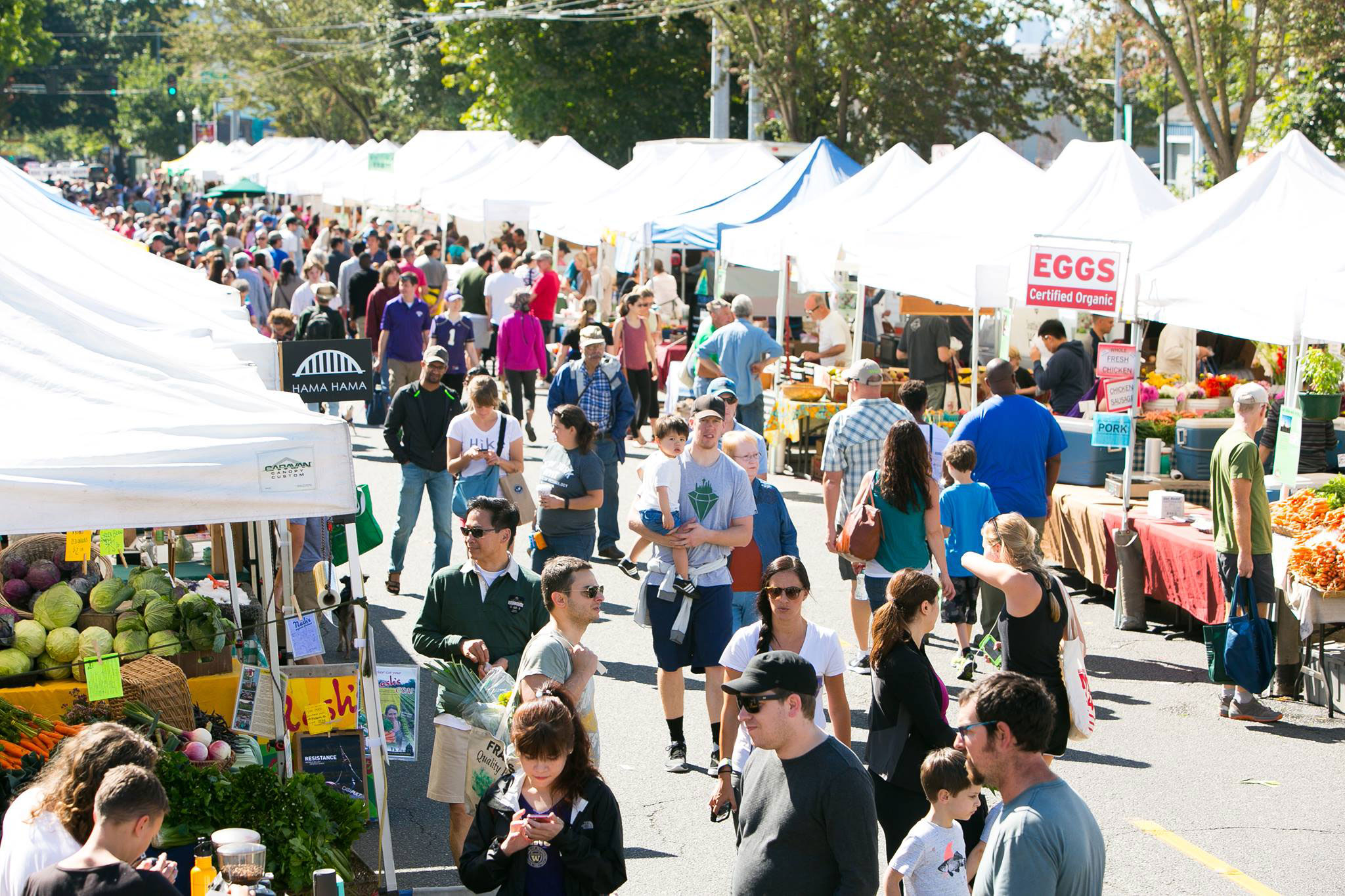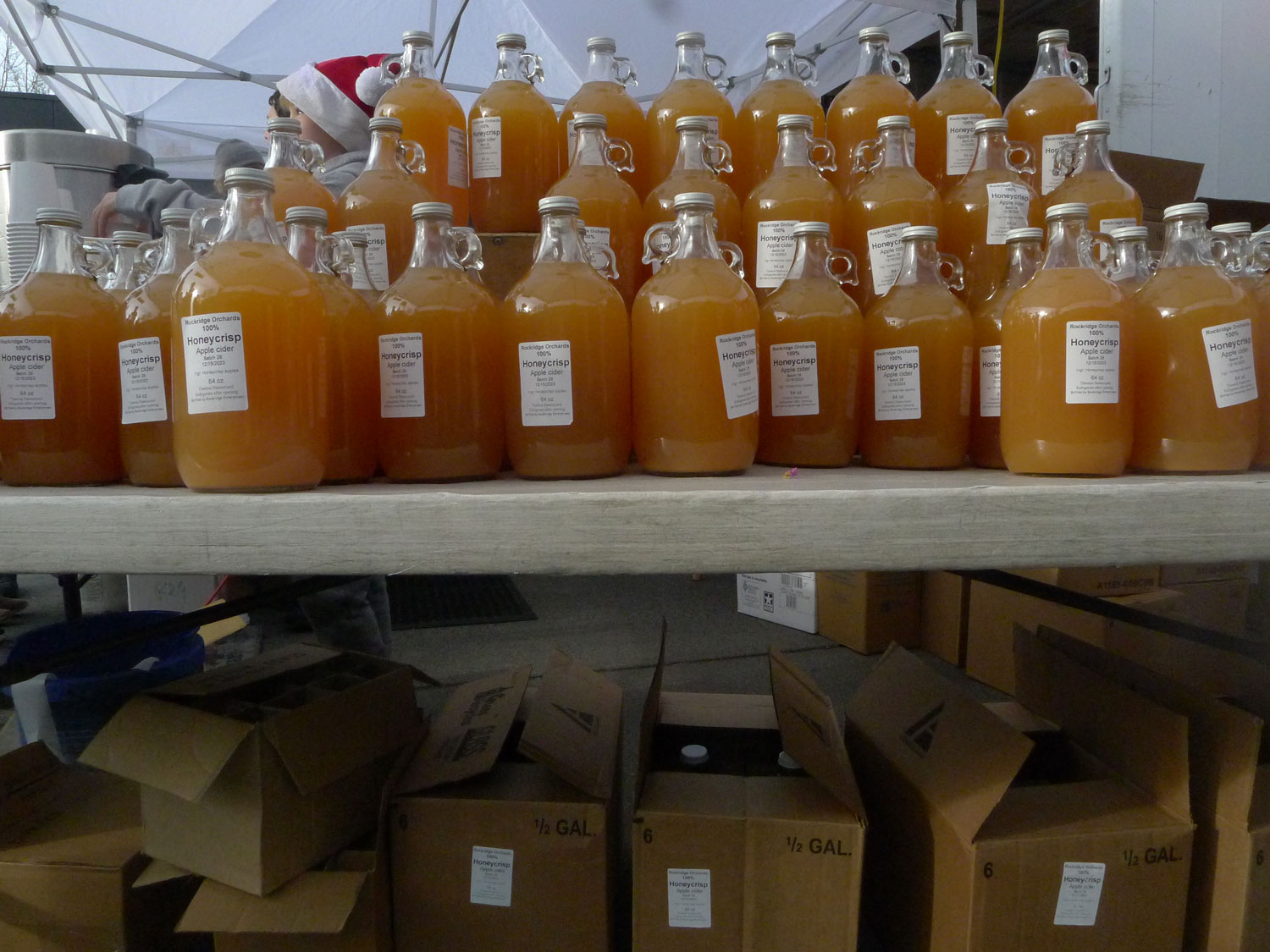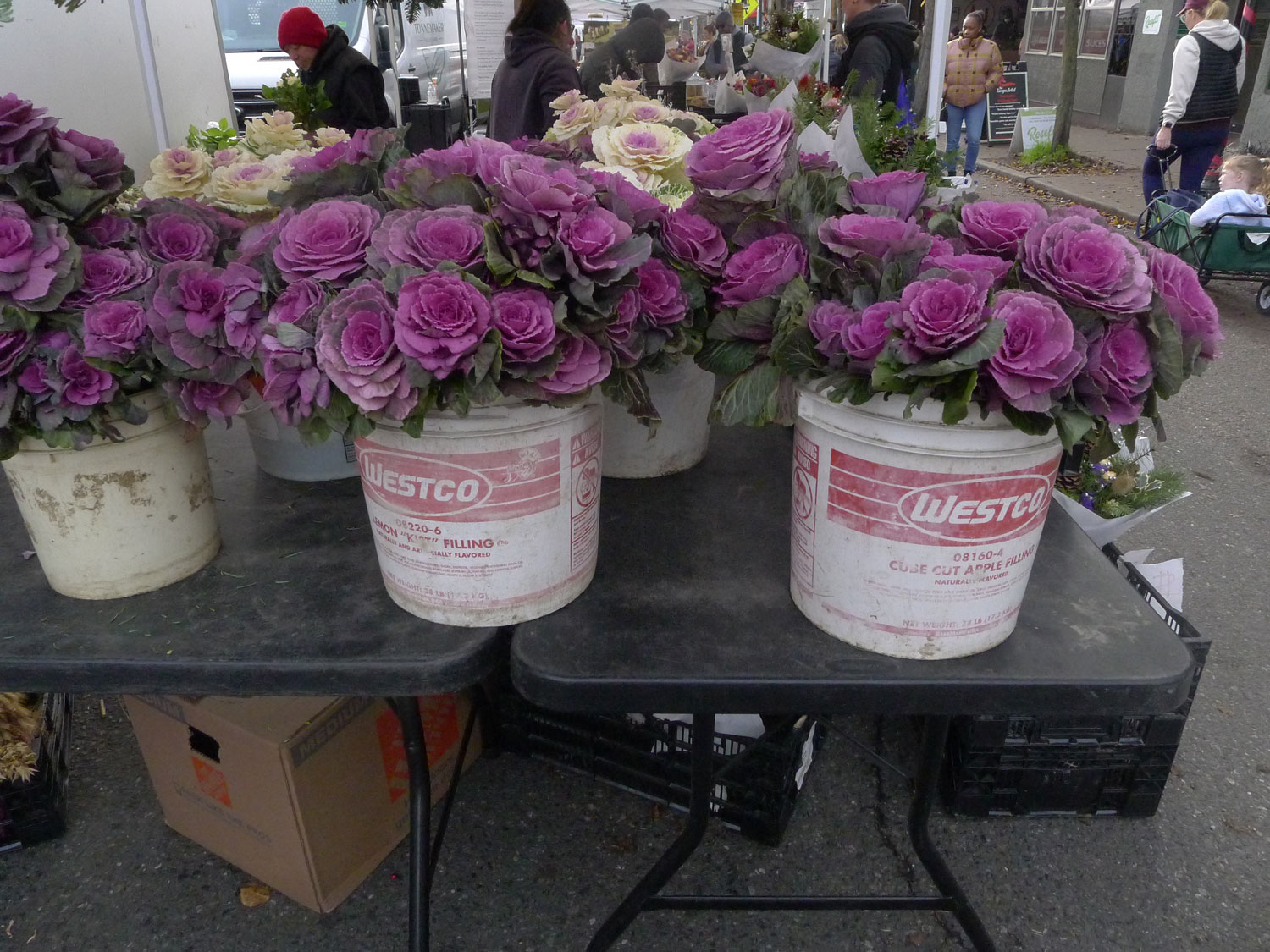
Treasure on the Ave Treasure on the Ave Treasure on the Ave
The "granddaddy" of Seattle farmers markets celebrates 30 years of bringing farm-fresh goods to the University District.
By Mike Seely | December 18, 2023
Tents are pitched on West Seattle's California Avenue on a chilly Sunday morning. The road is closed to traffic as music emanates from Easy Street Records. Across the street, in front of the Maharaja restaurant and bar, an elderly man is outfitted in a purple wizard's robe, playing a homemade instrument constructed from white PVC piping.
In most other settings, this gentleman would be quite the curiosity. But not at the West Seattle Farmers Market or any of its six siblings spread throughout the city: Capitol Hill, Columbia City, Lake City, Magnolia, Phinney, and the granddaddy of them all, the University District Neighborhood Farmers Market. Here, the old purple wizard with the PVC pipe is just part of the rhapsody of life, free to be himself amidst a weekly concert of hippie commerce.
The seed for Seattle’s network of farmers markets (including Ballard, Madrona, and Wallingford, which are organized under a different umbrella) started some 32 years ago on an avenue in California. A woman named Chris Curtis, ’73, had just sold the Häagen-Dazs ice cream shop she owned in the University District and was taking some time off to travel and contemplate her next move in life.
“I was lucky enough to just be in Southern California on a Wednesday,” says Curtis while seated on a long wooden bench inside University Heights Center, her hair streaked with purple. “They have a beautiful downtown farmers market in Santa Monica, and I thought, ‘This is what a farmers market could be in Seattle, in the U District.’
- Photo by Jon Marmor
- Photo by Jon Marmor
“I had a business background and some friends here in the U District, but it took a long time. For a year-and-a-half, it was all volunteers. We had to have U-Heights sign off on it. Then, of course, we needed farmers.”
At the time, Seattle didn’t have any neighborhood farmers markets — unless one were to count Pike Place Market, one of the most renowned farmers markets in the world and a tremendous resource for Curtis when she set her vision into motion.
“I brought in people from Pike Place Market, from WSU Cooperative Extension, anybody I knew in agriculture and asked, ‘How are we going to get our arms around farmers that go direct to market like this?’” says Curtis. “Most farmers don’t sell like this. Most farmers have big commodity crops or giant dairy herds or whatever.”
After consulting her steering committee, Curtis sent out a survey seeking advice from 270 farmers around Washington state. Ninety of them replied, and half of those respondents said they might be interested in selling their food at the U District Farmers Market if and when it got off the ground.
“They didn’t want to see crafts; they didn’t want to see crocheted Barbie clothes,” recalls Curtis, a Wallingford resident whose ringtone is “She’s A Rainbow” by The Rolling Stones. “They loved the purity of the vision.”
On opening day, in 1993, Curtis had 22 vendors, 17 of which were farmers and another five either bakers or nurseries. She hoped the market, then held in the U Heights parking lot, would attract 500 shoppers. Twice as many showed up, and a Seattle staple took flight.
“The University District Farmers Market was really the first all-farm, producers-only market in Seattle outside of Pike Place, which is its own thing,” says Jennifer Antos, Curtis’ successor as executive director of Seattle Neighborhood Farmers Markets. “It opened Seattle’s eyes to the idea of buying directly from the producer in your own neighborhood. Thirty years later, it’s just part of the fabric of Seattle and our neighborhoods. The U District market really started all that.”
She hoped the market, then held in the U Heights parking lot, would attract 500 shoppers. Twice as many showed up.
Full circle at the ice cream shop
As with many U District endeavors, the University of Washington has played a vital role in supporting the farmers market as it continues to grow.
“Everything from the investment that the UW has made in maintaining accessible, safe environments—all the investments the UW makes in the community help make the market successful,” says Antos, who greeted shoppers with a handmade turkey hat on her head the Saturday before Thanksgiving. “Investment in the business improvement district to make sure that it’s clean and safe and accessible and well-lit. Their support of the light rail opening and just keeping the U District connected to the rest of the city, we’ve seen a really positive impact from that. People are able to reach the market in a way they weren’t before.”
Curtis had no idea what the U District Farmers Market would be like 30 years from its inception, or even that it would still exist. Today, it features 90 food producers and serves up to 3,000 shoppers per week, closing a stretch of University Way to traffic every Saturday and accounting for $5 million in sales per year.
But know this: The operation is nowhere near as simple as inviting a bunch of farmers to the Ave and watching them turn turnips into cash.
“Market day itself is a hard workday, but all the advocacy that could happen so we could stage in the street, to negotiate with Metro where they could get a bus stop — you have to get City Hall on your side,” says Curtis. “There was always some challenge that needed to be dealt with. I found I was at City Hall as often as I was at my office.”
After explaining that “farmers markets are regulated almost exactly the same way as Canlis,” Curtis adds, “When we started out, we could only have fresh food and vegetables and some baked goods. We had to work really hard early on to approve meats, cheeses, eggs, salmon. It was a much wider door once we got the health department involved because there was no way to get mechanical refrigeration out there, which is what they required. All the Igloo coolers that are out there are checked hourly by staff for temperature.”
The Häagen-Dazs shop Curtis once owned still serves ice cream, only now it’s called Sweet Alchemy. Its owner, Lois Ko, ’04, scooped ice cream at Häagen-Dazs as a UW undergrad years after Curtis sold the franchise. Now, she has relationships with the farmers who set up shop up the street each Saturday, sourcing many of her ingredients there and featuring seasonal flavors that showcase them.
Closer to Curtis’ Wallingford home, former Canlis sous chef Johnny Courtney and his wife, Sarah, have a restaurant called Atoma on North 45th Street, and it’s commonplace to find them on the Ave every Saturday, fetching food to serve their patrons.
It is hard to imagine Seattle without its farmers markets nowadays, and it’s hard to imagine a future without them. Curtis couldn’t see it from the day-to-day back in the ’90s, but that’s a legacy if there ever was one.

